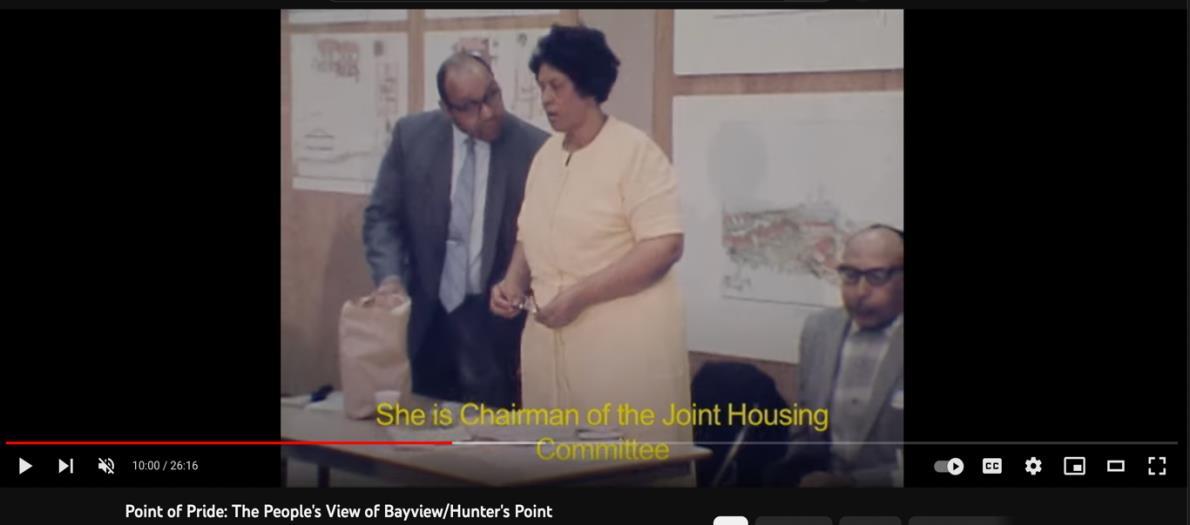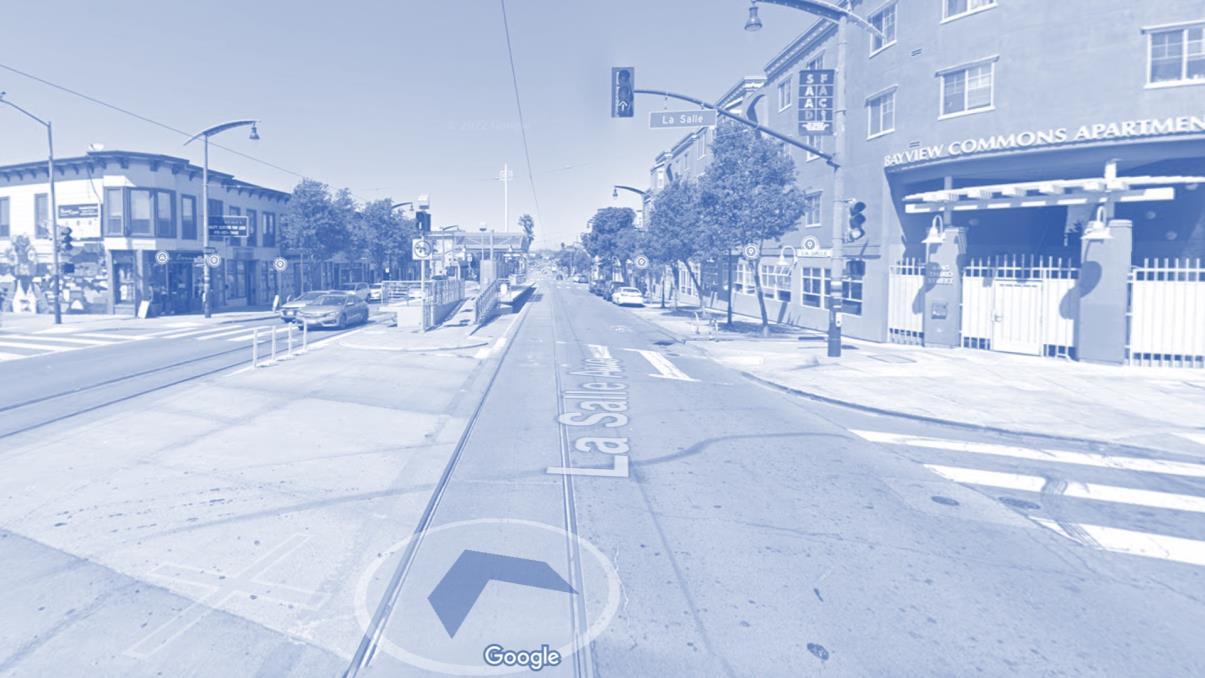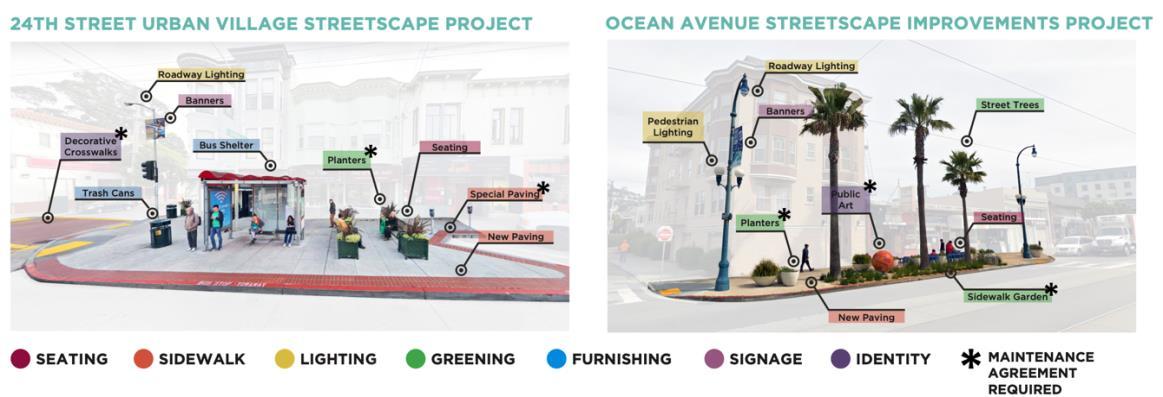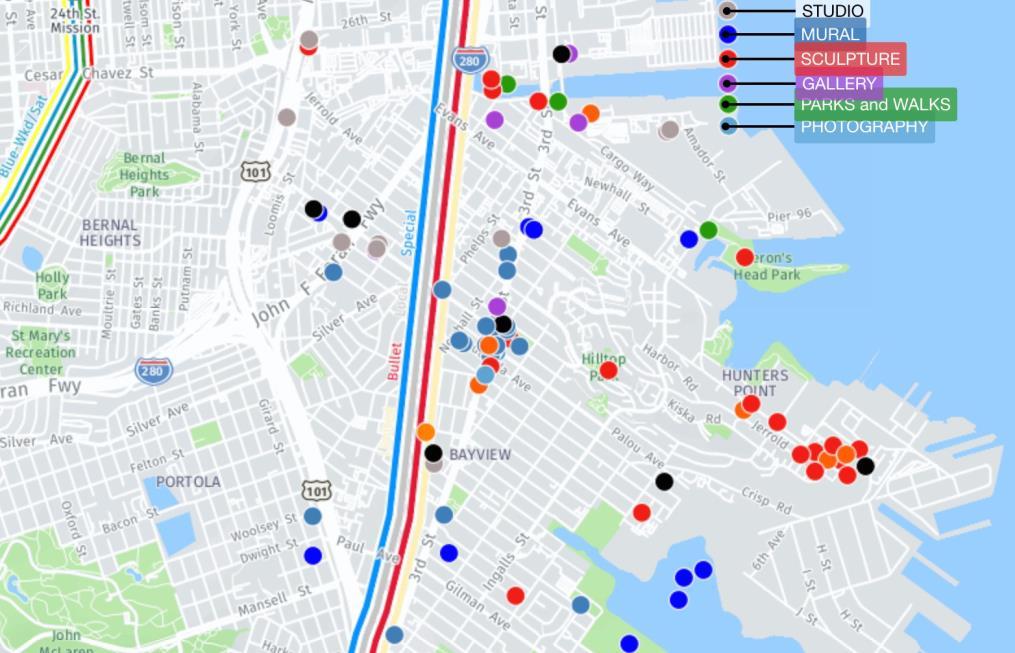
7 minute read
Plan Analysis
Economic Development is a strategic planning document and planning process that helps guide the economic growth and development of communities and regions The Third Street Economic Development and Corridor Strategy boasts the claim to improve its vitality while paying little attention to the historical connection to construct each strategy The plan leaves out community participation, plan intersectionality, physical upgrade, and cultural value, which is relevant and has the potential for an economic boost. By analyzing causes and possible cures from prior research, the focus of this analysis would emphasize crucial elements as connecting traits of the profound history of Third Street in Bayview Hunters Point neighborhood with their prospect as explored in the following:
a. Social (Bias) Improvement
Advertisement
While the high vacancy rate is evident, it is essential to see the deeper reasons behind the unsuccessful initiatives prior to the updated one in 2015. As the plan claims, many operations along the commercial corridor are family operated and are part of the community’s identity 8 Thus, community participation is fundamental. The document, however, misses addressing the role of the Bay Area Local Initiatives Support Coalition (LISC)/Economic Development on Third (EDoT) as the decision-maker to engage and manage the layers of power in regard to optimal participation and inclusive strategies (Figure 3).
In particular, the plan does not deliver clearly on who and how the community is involved as it only states the community survey as part of the methods. Whether the citizen is only part of the survey (nonparticipation), tokenized, or could gain citizen power. As the plan tries to segment the corridor based on the identified existing features, it raises the concern of who identifies the feature in the first place and for whom is the new retail accommodation.
Being equally exclusive, the program also leaves out vulnerable groups such as single-parent women and people with disability in biased social improvement. In Hunters Bayview Point, as in most black communities, the burden of public responsibility has been shouldered largely by black women, portrayed in history by Mrs. Eloise Westbrook, Osceola Washington, Bertha Freeman, Ruth Williams, and Rosalie Williams (Figure 4). They command grassroots organizations that got decision-making power over the urban renewal program of the neighborhood since the 1950s.9 Hence, women are key actors with whom the plan missed to identify and engage. Moreover, to support the collective identity, the planning strategy to foster safety and limit crime through increasing police presence and surveillance raises the concern of who is watching who, undermining specific groups through a less inclusive approach.
b. (Incomplete) Economic strategy
A neighborhood is a collection of amenities, housing, retail, public goods, and many other bounds in a place. From an economic perspective, a neighborhood also means the group of assets, labor, land, and business that is part of the region's more extensive system. As it is greater than the sum of its parts, thus, planning for economic improvements would be less effective when it oversights the interaction with non-economic aspects. The Third Street revitalization scheme needs to be an awakening call for housing growth to stimulate job and 9 Point of Pride
10 business growth. It is beyond the high rate of vacancy issues, given the fact that approximately 92% of the employees who work in the Bayview district live outside the neighborhood.10
As the Third Street Corridor is designated to be a mixed-use area, it is not clear how the plan would not only invite more people to live in the neighborhood but also preserve the existing community. How does inviting new socio-economic groups moving into the new development not part of the recurring gentrification? How can retail enhancement cover the lack of housing and public amenities? More importantly, the plan did not mention the key issue of unemployment to increase the community's opportunity and capacity in the labor market to generate economic gains. The economic strategy needs to break the neighborhood disinvestment chain that recurs over time
As complex as it should be, the plan overlooks the sustainability issue despite being located on a concentrated industrial site, which is undoubtedly part of the economic release. The potential intersection between the economic development and corridor strategy of Third Street with other city planning documents is explored in the following table.
City Planning Document
SF General Plan
Third Street Economic Development and Corridor Strategy
2015
Accommodate urban growth; guide and harmonize the social, economic, physical, and environmental factors.
SF Housing Support density bonus, and new affordable housing projects for low and moderate-income family.
SF Sustainable Neighborhood Program
SF Better Streets
Transportation Element
SF Small Business Initiative
SF Cultural Heritage Preservation
Help address health and prosperity disparities faced by communities of color and other vulnerable citizens.
Promote streets as centers of public life, and stimulate walking, bicycling, and use of public transit.
A reliable strategy to increase travel to Third Street inequitable outcomes for low-income communities and communities of color.
Modernize zoning along neighborhood commercial corridors.
Safeguarding the historical, social, and economic value of its communities in a way that strengthens residents' and visitors' understanding and appreciation of these significant places and practices.
c. (Unfriendly) Design
The intercept survey of stakeholders shows that improvement in the public realm is the most desired by the people, along with the greater variety of businesses on the Third Street corridor 11 While the plan addresses the parking problem as the significant improvement needed, it focuses less on the active use of public transportation and bike plan. Despite having the MUNI T-Line running through the middle of Third Street as an advantage, the visual disconnection from one side to the other accumulates unsafe perception (Figure 5). Nor does the plan lack initiative and program to ensure a safe, family-friendly shopping environment as a core condition for the corridor’s continued success. Furthermore, the plan also does not adequately describe how the improvement could accommodate people with disabilities, assuming all individuals have the same physical capacity as both retailers and visitors in the first place.
Figure 5. Street View of Third Street Corridor (Author 2022)
There are numerous Slow Streets and tactical urbanism across San Francisco (Figure 6), but none were placed in the Third Street Corridor. Taking the example from the Outer Mission District design guideline, the improvement clearly shows the need for physical investment concerning a vibrant commercial corridor. The place would only gain economic means if it could compete with the experience of other corridors in the city. As the corridor needs to thrive, not only survive. 11 AECOM, “Third Street Economic Development and Corridor Strategy” 33.

d. (Unrevealed) Local Assets and Cultural Determinants

As culture is tightly knotted with the people, the only way to preserve it is by maintaining the value of communities, which the whole plan neglects. The Third Street Retail corridor is conducted as the neighborhood's front face for visitors with the advantage of MUNI connection. Nevertheless, the strategies were made merely to attract retailers by adopting programs and brands from other places that could be built anywhere in any context (Figure 7). It lacks the determination to preserve cultural elements by centrally focusing on monetary value and not emphasizing any local identities representing the heart of the community.

Furthermore, despite being surrounded by abundant cultural determinants, the plan fails to identify and connect with the existing community nodes and Hunters Bayview Point initiatives. Engaging with local organizations such as artBAYVIEW is essential to maximize the existing asset of art and culture within the corridor and greater region. The following maps show the cultural assets that could be enhanced and involved in particular ways as opposed to the indistinct variety of festive brands.

Recommendations
Creating a vibrant, profitable, and flourishing economic development and corridor strategy must start beyond analyzing the high vacancy rate problem and asking more inclusive questions Working with a community with a long history of being marginalized and continuing to be displaced by the system behind seemingly part of the city’s progress, the development plan should reflect deeply not to repeat the same narration. These are recommendations for the authority to incorporate:
1. Engage. Build and manage social complexity through local community engagement and pay more attention to women’s roles and youth aspirations. The history of Hunters Bayview Point shows that powerful movements and progress come from women and the voice of children. By inviting the marginalized community to gain control beyond passive participation and weigh more on the unengaged group that the process has not touched, the more inclusive the development outcomes will be. Encompassing local arts and finding community leaders or key persons are also excellent catalysts for community engagement.
2. Explore. Include the cross-cutting elements for a more comprehensive plan and inclusive economic growth. This element should address policies/strategies related to housing, infrastructure, transportation, health, sustainability, and other relevant topics. Each factor significantly correlates and opens the window of opportunities for innovation, such as foodscape, micromobility, and many others.
3. Encourage. The physical design of the corridor should extend beyond the façade/aesthetic perspective. Encouraging active transportation, enhancing public safety, and implementing universal design should be the means of design as physical improvements. To thrive and not only survive, the corridor needs to have the basic elements to ensure the experience of a commercial corridor.
4. Elaborate. The strategy needs to incorporate community assets and the cultural heritage of the indigenous population and local communities. Combining local heritages, such as food recipes 12 , local artists, music13 , and historic landscapes, is one of the ways to engage the community, preserve their local values, and become a standout point to differentiate from other destinations.
5. Evaluate. Clear phasing and development outcomes for the public to evaluate. As a fragment of the Bayview megaproject, the authority needs to have a transparent informing platform to hinder lacked accountability metrics and a means for the public to track progress on the project. It also could be part of an assessment framework that rejects traumatizing urban revitalization that has been glooming over the neighborhood. 12
The following table summarizes the missing traits from the plan to our recommendation for further analysis and development.
Table 2. Issues and Recommendation Matrix for the Third Street Economic Development and Corridor Strategy
Recommendations
Short-term Issue
Objective
Engage Improve unbiased local and marginalized community aspiration
Explore Comprehensive economic strategy (retail improvement, job opportunity)
Encourage Friendly design (universal access, public safety)
Elaborate Reveal local assets (local artist exposure, provide unique experience)
Evaluate Public monitoring and clear project management
Long-term Issue
Optimum citizen control and participation
Housing affordability, self-sustain neighborhood
Vibrant commercial corridor
Cultural preservation
Gaining citizen trust and building effective collaboration


